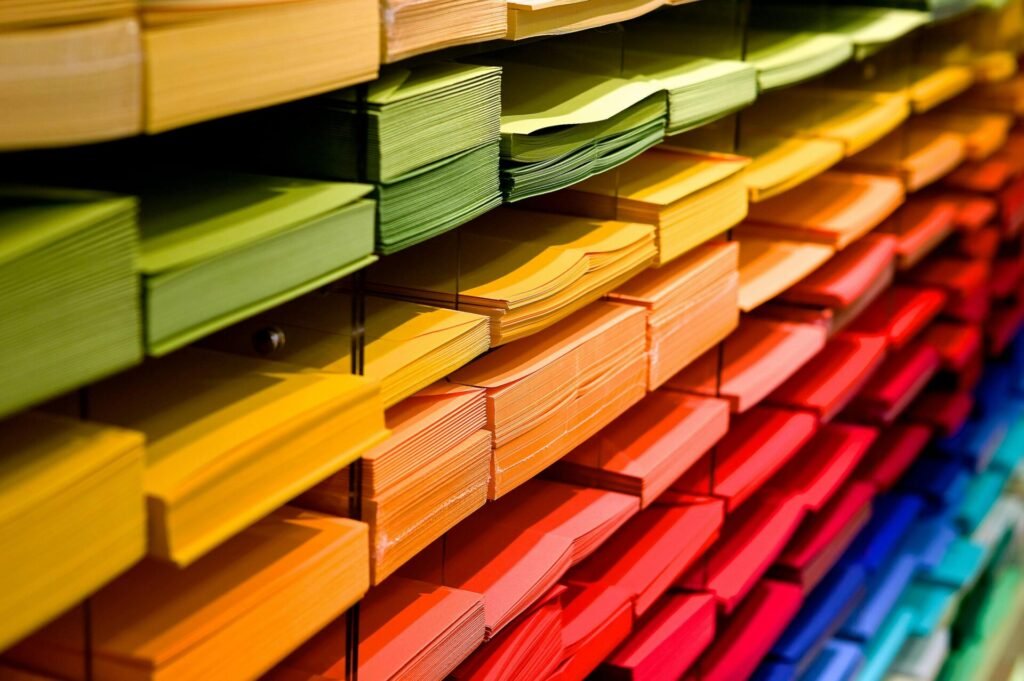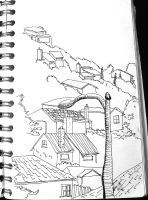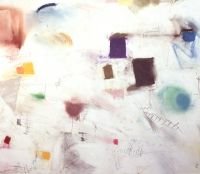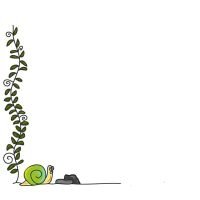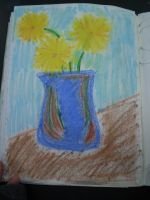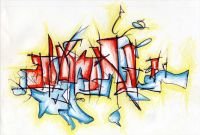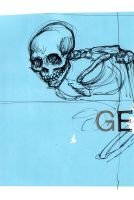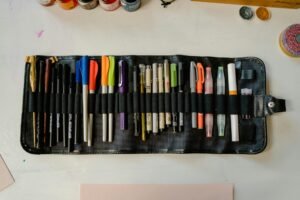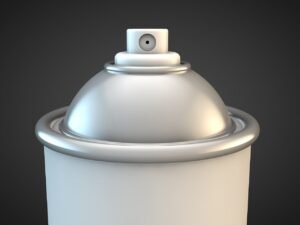Why Paper Choice Matters
Whether you’re a sketchbook enthusiast, a mixed media artist, or just starting your creative journey, understanding the types of paper and how to use them is essential. The surface you choose can dramatically affect your results—impacting everything from ink flow to paint absorption. This guide breaks down the most common paper types, their characteristics, and how to match them with the right tools and techniques.
Paper isn’t just a background—it’s an active part of your creative process. The weight, texture, absorbency, and finish of a sheet can influence how your materials behave. Choosing the right paper helps you avoid frustration, improves your results, and enhances your overall experience.
Whether you’re drawing, painting, printing, or crafting, knowing your paper is just as important as knowing your tools.
Understanding Paper Weight and Texture
Paper Weight
Paper weight is typically measured in GSM (grams per square meter). The higher the number, the thicker and heavier the paper.
- 70–90 GSM: Lightweight, ideal for everyday writing or sketching with dry media.
- 100–150 GSM: Medium weight, suitable for ink, light watercolor, and mixed media.
- 200–300 GSM: Heavyweight, perfect for watercolor, acrylic, and wet techniques.
- 300+ GSM: Extra heavy, often used for professional-grade painting or printmaking.
Paper Texture
Also known as tooth, texture affects how materials grip the surface.
- Smooth (Hot Pressed): Great for detailed ink work, markers, and calligraphy.
- Medium (Cold Pressed): Versatile for watercolor, graphite, and colored pencil.
- Rough: Ideal for expressive watercolor and charcoal, offering strong texture and absorbency.
Sketchbooks.org | VISUAL RESEARCH HUB
Artist Grade Paper Texture and Weight
Visual research is critical for any creative endeavor. We have compiled specialized links to lead you directly to images, videos, and inspiration for "Artist Grade Paper Texture and Weight" across the web's best visual search platforms.
Understanding Paper Processing and Surface Finish
The way paper is processed—especially how it’s pressed during manufacturing—affects its surface texture, absorbency, and how it interacts with different media.
Hot Pressed (Smooth Finish) Hot pressed paper is rolled between heated cylinders, resulting in a smooth, low-tooth surface.
- Ideal for: fine detail work, ink, markers, colored pencil, and calligraphy
- Absorbency: low, allowing for crisp lines and slow drying times
- Common in: botanical illustration, technical drawing, and mixed media with minimal texture
Cold Pressed (Medium Texture) Cold pressed paper is pressed without heat, leaving a subtle texture that balances grip and smoothness.
- Ideal for: watercolor, graphite, gouache, and soft pastels
- Absorbency: moderate, allowing for controlled washes and layering
- Common in: general-purpose watercolor pads and sketchbooks
Rough Pressed (Heavy Texture) Rough paper is air-dried or minimally pressed, preserving a pronounced tooth and irregular surface.
- Ideal for: expressive watercolor, charcoal, and loose ink washes
- Absorbency: high, which can lead to softer edges and faster drying
- Common in: landscape painting, abstract work, and texture-rich techniques
Sketchbooks.org | VISUAL RESEARCH HUB
Artist Press Paper Surface Finish
Visual research is critical for any creative endeavor. We have compiled specialized links to lead you directly to images, videos, and inspiration for "Artist Press Paper Surface Finish" across the web's best visual search platforms.
Common Types of Paper and How to Use Them
Drawing Paper
Drawing paper is a versatile surface designed for dry media like graphite, charcoal, and colored pencil. It usually ranges from 100–200 GSM and comes in smooth or lightly textured finishes.
Best for: Sketching, shading, colored pencil, graphite, charcoal
Avoid: Heavy wet media like watercolor or ink washes
Sketchbook Paper
Sketchbook paper varies widely in quality and weight. Most are designed for dry media, but some mixed media sketchbooks can handle ink and light washes.
Best for: Daily drawing, idea development, visual journaling
Tip: Choose acid-free paper to preserve your work over time
Watercolor Paper
Watercolor paper is designed to absorb and hold water without warping. It comes in hot press (smooth), cold press (textured), and rough varieties.
Best for: Watercolor, gouache, ink washes
Tip: Stretch your paper or tape it down to prevent buckling
Bristol Board
Bristol board is a smooth, heavyweight paper ideal for clean, crisp lines. It comes in vellum (slightly textured) and smooth finishes.
Best for: Pen and ink, markers, technical drawing, comic art
Avoid: Heavy wet media—it may buckle or bleed
Mixed Media Paper
Mixed media paper is designed to handle both wet and dry materials. It’s a great all-purpose option for artists who like to experiment.
Best for: Watercolor, ink, pencil, collage, light acrylic
Tip: Look for 160–250 GSM for best versatility
Newsprint
Newsprint is inexpensive and lightweight, often used for practice sketches or gesture drawing.
Best for: Charcoal, graphite, warm-up exercises
Avoid: Long-term work—it yellows and deteriorates quickly
Kraft and Toned Paper
Toned paper (gray, tan, or kraft) provides a mid-tone base, allowing highlights and shadows to pop.
Best for: White charcoal, pastel, colored pencil, ink
Tip: Use toned paper to speed up value studies and add depth
Handmade and Specialty Papers
These include rice paper, mulberry, Lokta, and other textured or fibrous papers. They’re often used in printmaking, collage, or calligraphy.
Best for: Ink, brushwork, collage, decorative projects
Tip: Test your materials—absorbency and texture vary widely
How to Choose the Right Paper for Your Medium
For Pencil and Graphite
Use smooth or lightly textured drawing paper (100–150 GSM). Heavier paper isn’t necessary unless you’re layering heavily.
For Ink and Markers
Opt for smooth Bristol board or marker paper. These prevent feathering and allow for crisp lines and vibrant color.
For Watercolor and Gouache
Use cold press or rough watercolor paper (200–300+ GSM). The texture helps hold pigment and water evenly.
For Acrylic and Heavy Paint
Choose heavyweight mixed media or acrylic paper (300+ GSM). Some artists prefer canvas paper for texture.
For Collage and Crafting
Use cardstock, construction paper, or mixed media paper. Heavier weights support glue and layered materials.
Tips for Using Paper Effectively
- Test your tools: Always swatch your materials on a corner of the paper before starting.
- Store flat: Keep paper in a dry, flat space to avoid warping or curling.
- Use fixative: For charcoal or pastel, apply a fixative spray to prevent smudging.
- Label your sketchbook: Note the paper type and weight inside the cover for future reference.
- Don’t hoard the “good paper”: Use it! Your best work often comes when you’re not overthinking.

Sketchbooks.org | ARTIST MARKETING GUIDE
Pop-Up Art Selling Spaces | How to Start Art Busking Anywhere
In a world where creativity meets mobility, pop-up art selling spaces are redefining how artists connect with audiences. Whether you're a painter, sketch artist, or mixed-media creator, art busking—selling and performing art in public spaces—offers...
Frequently Asked Questions
What’s the difference between sketchbook and drawing paper?
Sketchbook paper is often lighter and more versatile, while drawing paper is thicker and better for finished work.
Can I use watercolor on regular paper?
You can, but it may buckle or tear—watercolor paper is designed to handle moisture.
What paper is best for ink pens?
Smooth Bristol board or hot press watercolor paper works well for clean ink lines.
Is mixed media paper good for beginners?
Yes, it’s a flexible option that handles both wet and dry media without being too specialized.
What’s the best paper for colored pencils?
Look for medium-textured drawing paper or toned paper for layering and blending.
Can I use printer paper for art?
It’s fine for practice, but it’s too thin for most wet media and may bleed or warp.
How do I prevent paper from curling when painting?
Tape it down or stretch it before painting, especially with watercolor.
What’s the benefit of toned paper?
It provides a mid-tone base, making highlights and shadows more dynamic.
Final Thoughts
Understanding the types of paper and how to use them is a foundational skill for any creative. The right surface can elevate your work, support your technique, and make your process more enjoyable. Whether you’re filling a sketchbook, experimenting with watercolor, or layering a collage, choosing the right paper is part of the art itself.
So go ahead—explore, test, and trust your hands. The perfect page is waiting.
Ready to Share Your Work?
